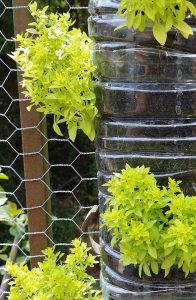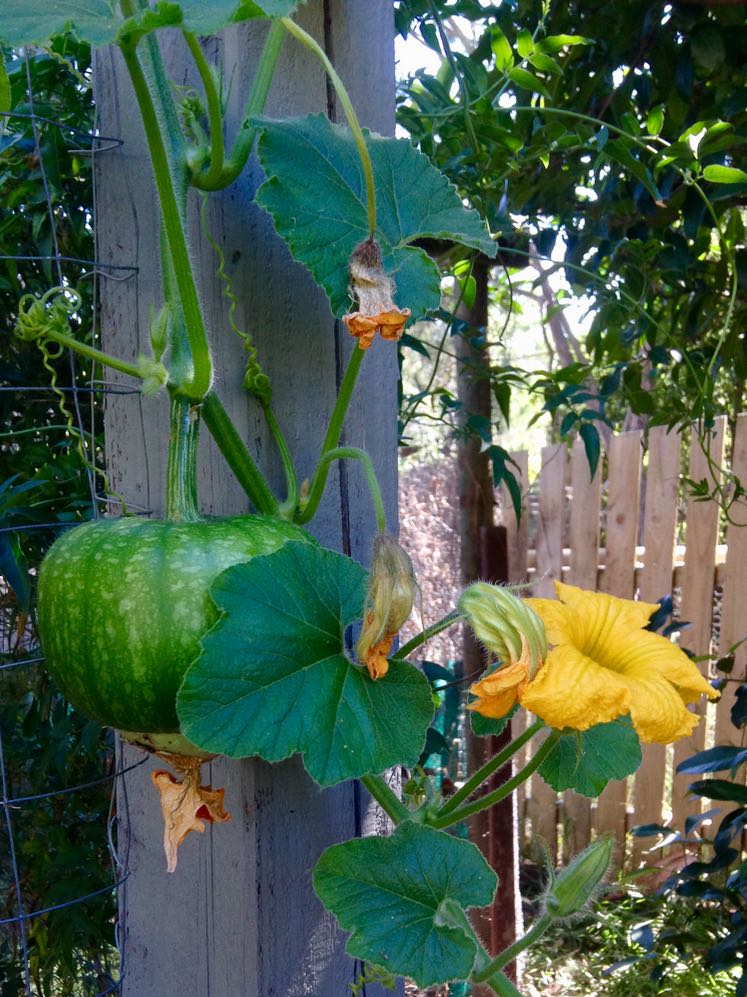Not everyone has room for a massive garden but there are ways that you can have a productive garden in a small area.
Vertical gardens are like tiny stacked gardens. They rely on having either small bits of soil or a constant supply of nutrients through water (this is called hydroponics which literally means ‘grown in water’).
The upside to vertical gardens is big production in teeny space but the downside is that because it doesn’t have any connection to the earth it’s not very resilient and can dry out quickly. So they need lots of love and attention and are best placed close to your home and preferably with some sort of watering system attached.
 This vertical garden is built from PVC plumbing pipe and has three different designs to give you some ideas. There are lots of other ways to do this but the concepts are much the same.
This vertical garden is built from PVC plumbing pipe and has three different designs to give you some ideas. There are lots of other ways to do this but the concepts are much the same.
The top pipe is a horizontal wicking bed. This basically means that the whole pipe is sealed so that it stores water like a tiny water tank. The pots contain the soil and have a small cotton ‘wick’ attached to the bottom that allows water to travel up into the plant (it’s called capillary action and works the same as when you put the edge of a serviette in a glass of water). There’s a hole in one end of the pipe to drain excess water so that plants don’t sit in water as they don’t like that!
The other horizontal pipes are a bit angled. These ones are filled with soil, with the plants planted directly into it. The idea is that the water is added from the top and will gradually make its way down to the bottom, watering plants as it goes. This means that we save water and the whole thing doesn’t die if we forget to water it.
The vertical pipes work sort of the same way. Holes drilled in pipes, filled with soil and plants, planted directly into them. Because the water will drain faster we have to think about what we plant and also have mixed some gravel through the soil to stop the soil becoming too compacted.
For more info check out www.transitiondarebin.org.

